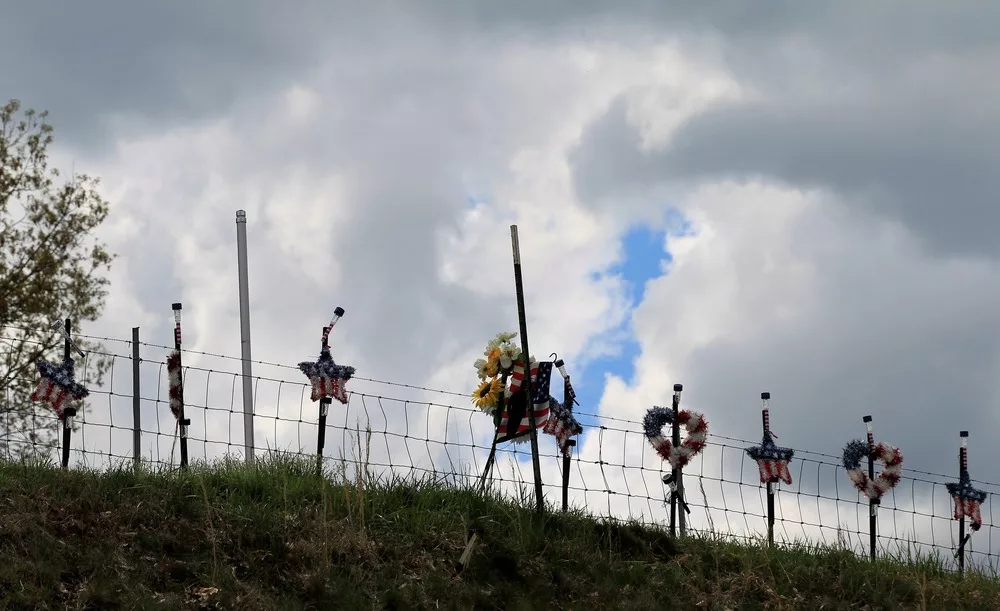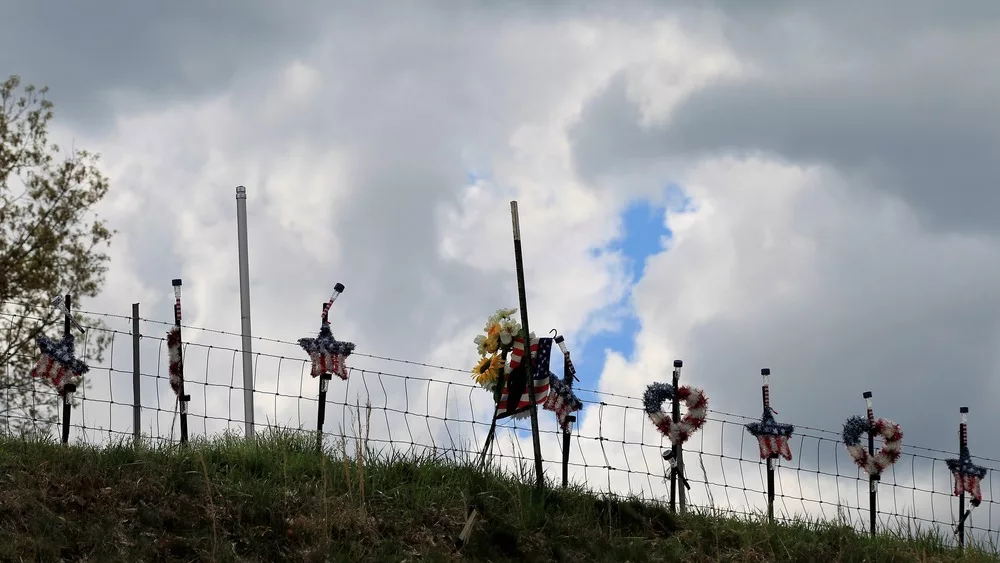
Given the difficult nature and the Privacy Act of 1974, most of the 493-page report on the 29 March 2023 two-helicopter crash in Trigg County has been redacted by officials at Fort Novosel, Alabama’s United States Army Combat Readiness Center.
Their tasks, in the aftermath, were to find conclusions to questions surrounding the circumstances leading up to the deaths of nine Fort Campbell soldiers — who were training in familiar territory near Cadiz.
However, some new details can be gleaned from the event and its post-crash analysis.
The two mishap aircraft were HH-60M MEDEVAC Black Hawks, assigned to the 6th Battalion, 101st Aviation Regiment, 101st Aviation Brigade, and their occupants were working through night vision goggle single-ship and multi-ship formations, daytime and nighttime aviation mission survivability, and other progression tasks like hoist training and crashworthy external fuel system operations.
In one aircraft: Chief Warrant Officer 2 Zachary Esparza, Warrant Officer 1 Jeffery Barnes, Sergeant Isaac Gayo, Sergeant David Solinas and Staff Sergeant Taylor Mitchell.
Esparza was an instructor pilot, Barnes was a pilot, Gayo was a crew chief and aircraft mechanic, Solinas was a flight medic and Mitchell was a crew member and standardization instructor.
In the other aircraft: Chief Warrant Officer 2 Rusten Smith, Warrant Officer 1 Aaron Healy, Corporal Emilie Bolanos and Staff Sergeant Joshua Gore.
Smith was an instructor pilot, Healy was a pilot, Bolanos was a crew chief and aircraft mechanic, and Gore was a flight medic.
On the night of the crash, there was one additional rated crew member who was listed on the flight schedule. He had flown with Smith and his crew earlier in the day, however, he had exited the aircraft at Campbell Army Airfield prior to the incident.
The mission was approved 27 March 2023, and was designated as a “medium risk” mission with several unmitigatable factors.
Following several iterations of night vision goggle multi-ship training, Esparza radioed Smith, and asked how he wanted to link-up and take lead to complete his iterations of the training.
At the time of this call, the two helicopters were separated by 1 ½ miles.
Smith told Esparza to fly heading 100 degrees, and then told Healy to fly heading 360 degrees.
As the two aircraft closed the distance separating them, Smith announced he was at the 2 o’clock position of Esparza’s aircraft, and was going to turn heading 100 degrees, and that Esparza and his aircraft could fall in a trailing formation.
Within seconds of this measure, the two aircraft impacted on flight. There were no mayday calls or radio transmissions thereafter.
Following this in-flight impact, two other aircraft — flying as a dual unit southwest of this position, approximately 4 ½ miles away — began looking in the vicinity of the crash.
Simultaneously, several civilian personnel — within a mile radius of the aerial impact — heard a loud noise that some believed to be a “gas main explosion.”
One of these civilians called her cousin, a Kentucky State Trooper, to report the sound and express her concern that something was wrong.
This KSP trooper immediately got in his patrol car and drove toward the location of the loud noise.
Nearly simultaneous to KSP’s movements and within a half mile of the crash site, a father and retired Army navigator, as well his son living on the same property, immediately got in their vehicle and proceeded to a view of bright lights and fires on the ground.
With two fires on the ground, units from the two flying helicopters radioed the crashed units for survivors — to no avail — and they were diverted toward the crash site.
The first personnel to arrive at the site were this father and son, who told the Trigg County 911 Operator that there was an Army Black Hawk helicopter that had crashed, was on fire, and gave its exact location.
This call alerted civilian Emergency Medical Services and Fire Rescue services, who were located within a mile of the site.
The KSP officer had also arrived, bringing with him a fire extinguisher. He called Post One, and informed his lieutenant of the fire, the location, and requested immediate emergency response vehicles.
Once Campbell Approach Control and Fort Campbell proper were notified of the situation, soldiers landed the two in-flight helicopters and began Pre-Accident Plans, before working to locate and identify deceased crewmembers.
Multiple EMS agencies, both military and civilian, along with numerous law enforcement agencies, then began responding to assist and provide support. The first responders and follow-on support personnel were successful in extinguishing fires as well as locating and identifying all nine of the fallen — whose remains were initially transported to the Trigg County Coroner’s office before being transported to Blanchfield Army Community Hospital in Fort Campbell.
As for flight conditions: the wind speed was six knots, the visibility was 10 miles and the wind direction was 10 degrees. The horizon was visible, and the moon was at 49%.
The independent government cost estimate of site cleanup was north of $208,000, and the total cost of equipment lost was north of $50 million.






